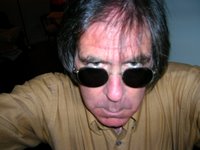
Photography as a means of preserving images for future generations was born in the 19th Century. This new tool in the historian’s toolbox captured President Abraham Lincoln’s image so that today we are all familiar with his rather stern look of melancholy and undeniable sadness. The last photograph taken of Lincoln while he was still alive was the one taken on the 10th in 1865; Lincoln died on the 16th.
Following the President’s death, his widow, Mary Ann Todd Lincoln, received from the United States Congress a pension of $3000 per year for the term of her life. In 1875 the President and Mrs. Lincoln’s son Robert would have his mother confined by court order to an insane asylum in Peoria, Illinois.
 Henri Désiré Landru was born on the 12th in 1869. He was a man on a mission, a mission that he pursued with remarkable vigor. It is unfortunate that the mission consisted of defrauding young women, stealing their money, and then indiscriminately killing them. While his body count does not really hold up when compared to other serial killers, he had his routine down pat. He used a number of aliases when approaching young ladies so that his identity would be shielded. When someone is engaged in a project such as the one that Henri was in, it pays to be as consistent in your behavior as possible. In order to keep track of just who he was on a given day Henri began to keep a rather large ledger of the aliases he had and was using. The final body count was 10 women and a son of one of the victims. However, I think the size of the ledger that he maintained might indicate a rather higher body count. Compared to fellow resident of France, Hélène Jegado, Landru was a rank amateur. Between 1833 and 1851, she murdered 23 people and is suspected in the deaths of at least 13 others.
Henri Désiré Landru was born on the 12th in 1869. He was a man on a mission, a mission that he pursued with remarkable vigor. It is unfortunate that the mission consisted of defrauding young women, stealing their money, and then indiscriminately killing them. While his body count does not really hold up when compared to other serial killers, he had his routine down pat. He used a number of aliases when approaching young ladies so that his identity would be shielded. When someone is engaged in a project such as the one that Henri was in, it pays to be as consistent in your behavior as possible. In order to keep track of just who he was on a given day Henri began to keep a rather large ledger of the aliases he had and was using. The final body count was 10 women and a son of one of the victims. However, I think the size of the ledger that he maintained might indicate a rather higher body count. Compared to fellow resident of France, Hélène Jegado, Landru was a rank amateur. Between 1833 and 1851, she murdered 23 people and is suspected in the deaths of at least 13 others.








